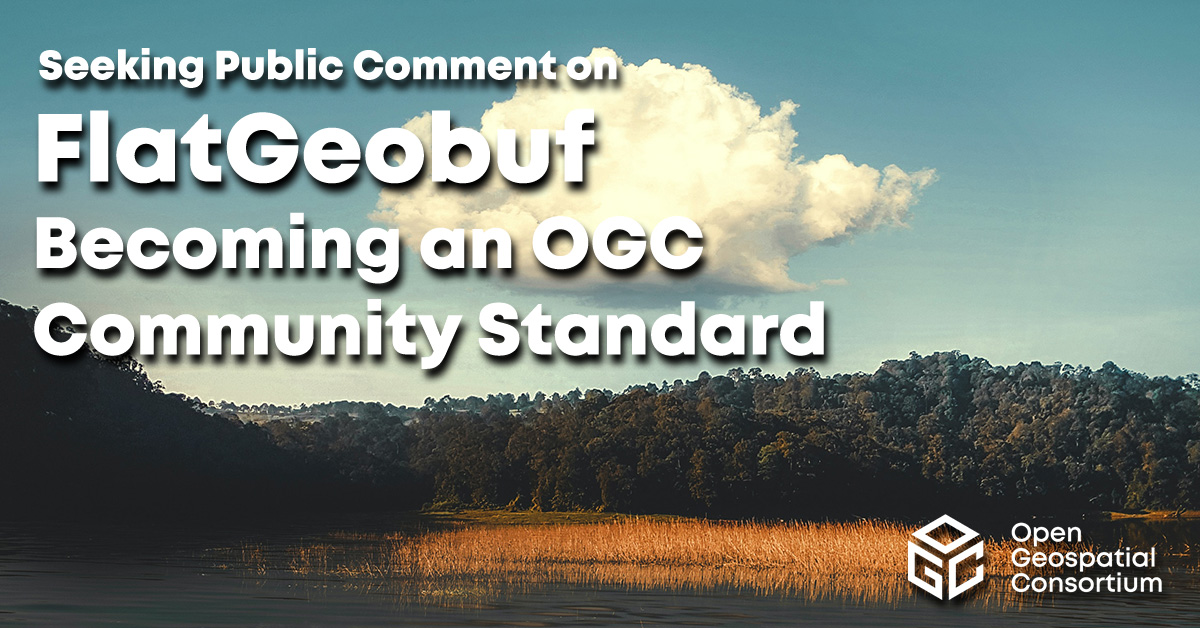Request Closed: February 10, 2023 12:00 am — March 13, 2023 12:00 am
The Open Geospatial Consortium (OGC) is looking to adopt FlatGeobuf as an official OGC Community Standard.
FlatGeobuf is a performant binary encoding for geographic data that can hold a collection of Simple Features. Because of its simple core design and efficient I/O handling, FlatGeobuf can work well as a “cloud native” lossless format for vector data. FlatGeobuf is based on flatbuffers.
FlatGeobuf was designed to be: suitable for storing and accessing large volumes of static data; significantly faster than legacy formats; unconstrained by size limitations for contents or metainformation, and; suitable for streaming/random access. No other current format combines good performance and “cloud native” design.
In addition to the cloud native use-case, FlatGeobuf is suitable as a fast interoperable serialization format for efficient communication between systems. It can also be used as a practical replacement for Shapefiles because it has the same design goal without the shortcomings (no required sidecars, no size limitations and more flexible column/value representation). FlatGeobuf could also be used as an optional output format for WFS and OGC API – Features and would, in this case, compete very favorably with GML and GeoJSON. Some GIS servers and clients use a custom binary encoding instead of JSON to improve efficiency for feature access over HTTP; FlatGeobuf provides similar efficiency in an open format.
The initial stable specification version of FlatGeobuf is versioned as 3.0 and was released with reference implementation and GDAL implementation early in 2020.
An OGC Community Standard is an official standard of OGC that is developed and maintained external to the OGC. The originator of the standard brings to OGC a “snapshot” of their work that is then endorsed by OGC membership as a stable, widely implemented standard that becomes part of the OGC Standards Baseline.
Downloads:
Justification for FlatGeobuf as an OGC Community Standard (23-004) (.PDF)
Comment:
Comments can be submitted to a dedicated email reflector for a thirty day period ending on the “Close request date” listed above, Comments received will be consolidated and reviewed by OGC members for incorporation into the document. Please submit your comments using the following link: Click here to submit comments The link provided above should include a standard template in the message body. If the preloaded message body does not work properly using your mail client, please refer to the following template for the message body: Comments Template
Subscribe:
You may wish to be added to the distribution list to receive comments as they are submitted
Subscribe to Distribution List.
Subscribing to the the list will also allow you to view comments already received, which can be found in the List Archives.
